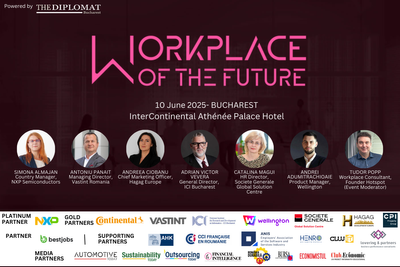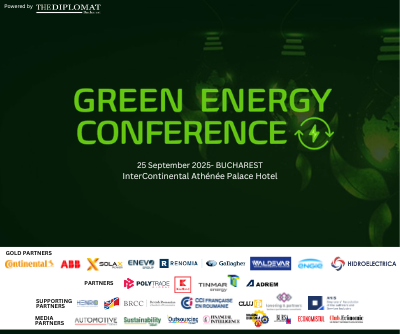Mihai Boldijar, Bosch: “We are convinced that hydrogen can be the mobility solution for heavy transport vehicles”

“One of our goals and that of the companies in this field is to make cars as safe as possible and to reduce the number of accidents and fatalities on public roads.
In Romania, we are facing some very serious problems regarding road accidents, and all the technological developments are made to make driving safer. We need to make developments so that the technology for autonomous driving exceeds Level 3. Here, the involvement of central and local authorities is needed to define the legal framework and to define the framework in which road traffic takes place, with appropriate preparation of those sections of road on which autonomous driving can be done,” Mihai Boldijar, Managing Director, Bosch Romania said at Automotive R&D Power Breakfast organized by Automotive Today.
“We are celebrating 30 years of presence on the Romanian market. We have reached over 10,000 employees and a very large part of them work in automotive software development, in a hub that actually means three regional R&D centers in Cluj, Budapest and Sofia.
We mainly develop solutions for autonomous driving, connectivity and electrification. Of course, other aspects and other development bets. We have a strong presence in Romania, and we managed to put Romania on the map of the Bosch group. Romania has reached the level of maturity that allows us to develop all these projects.
In 2030, the volume of the automotive software development market will reach 200 billion euros. The Bosch Group has 44,000 engineers, and 38,000 of them deal only with automotive software development, and we will grow to 50,000 by the end of next year.
There is another axis on which we are working and which we believe will be part of the mobility of the future, namely hydrogen. We are convinced that hydrogen can be the mobility solution for heavy transport vehicles, for those called off-highway, machines that are used in construction, in agriculture, etc., where electric solutions cannot be viable. They can be viable, obviously, to some extent for cars and vehicles up to 3.5 tons.
Hundreds of millions of euros are allocated annually for projects regarding hydrogen propulsion systems and hydrogen production. The beauty is that an internal combustion engine can be converted to hydrogen quite simply. The big problem arises with the injector, which has to close and open billions of times, without the lubrication that is now produced by gasoline or diesel.
And we’re basically at the stage where we’re developing this injector to run on hydrogen without having to be lubricated so that the conversion from an internal combustion engine to fossil fuel will be very easy to adapt.
We are moving forward with the use of hydrogen in Home Appliances as well. It is a project in the UK that envisages the conversion of thermal power plants with gas to hydrogen. The problem is obviously the cost of hydrogen and its transport.
The investments are very significant at a time when any kind of company working in the automotive field must enter this transition. That we like it or not. Whether the future will be electric is still a question mark. I think the future will show a technology-neutral mobility. That is, the use of all the elements that can compete to achieve the objectives or targets imposed by the European decarbonization community.
This is where we want to go, regardless of what we move with and how we move, we must achieve two objectives: 1. Decarbonization. 2. The reduction to zero of victims or fatalities on European roads.
According to ACEA, there are 630,000 charging stations at European level. In Romania, at the end of last year there were 2754 stations, that is 0.4% of the European total. We have a density of 15.2 cars per station. Ideally it would be under 10 cars per station. If we also include plug-in hybrid vehicles here, the density will increase. That is, the number of cars per station goes over 20, which is totally insufficient.”



















